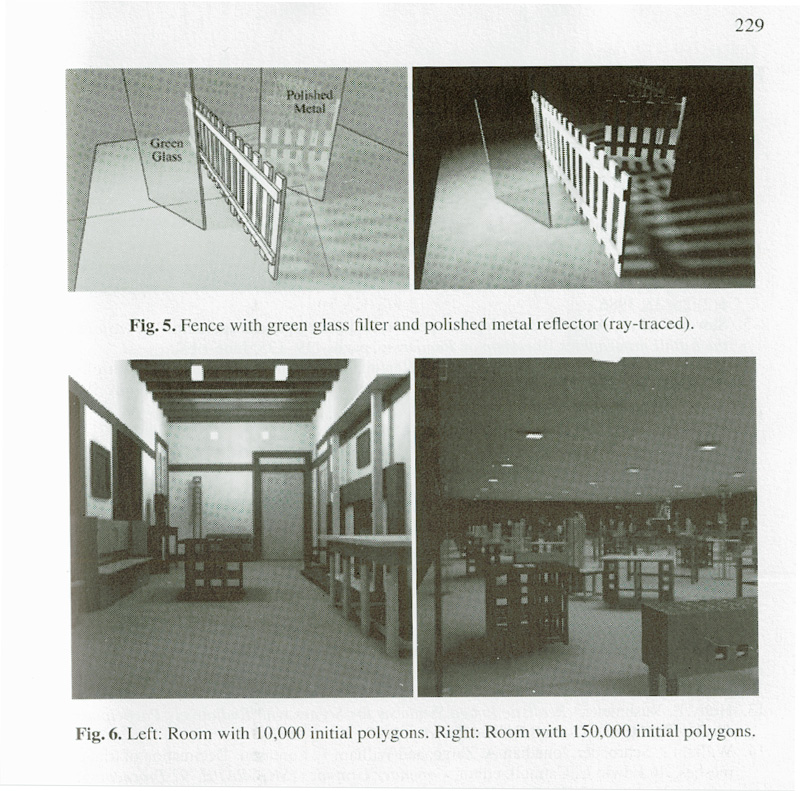|
|
[SWH+95a]
Cornell University Program of Computer Graphics |
|
||||
Global illumination via density estimation.Peter Shirley, Bretton Wade, Philip Hubbard, David Zareski, Bruce Walter, and Donald P. Greenberg.In Eurographics Rendering Workshop 1995. Eurographics, June 1995. This paper presents a new global-illumination algorithm for highly complex static environments containing both diffuse and non-diffuse surfaces. The algorithm accounts for all types of surface reflection, accommodates textured surfaces, and supports coarse-grained parallelism. A key to this method is a novel decomposition of the problem into a sequence of three loosely-coupled phases. The first phase consists of Monte Carlo particle tracing in which power-carrying particles are emitted from each luminaire, and tracked through the environment until they are absorbed. A list of particle ``hit points'' is kept for each surface. In the second phase, called the ``density-estimation'' phase, the stored hit points are used to construct an approximate irradiance function for each surface. In the final phase, called the ``meshing'' phase, each surface irradiance function is approximated by a piecewise-linear function. Display output can be either Gouraud-shaded polygonal elements for interactive walk-throughs, or ray-traced pixels for higher-quality still frames. The method is modular, relatively easy to implement, has low memory overhead, and has produced view-independent display meshes for models larger than the ones that have been processed by previous methods. Such solutions could improve the state-of-the-art in architectural simulations, immersive environments, and other virtual reality applications.
This paper is available as a compressed Postscript file SWH+95a.ps.gz (304K).
| ||||||
| ||||||
